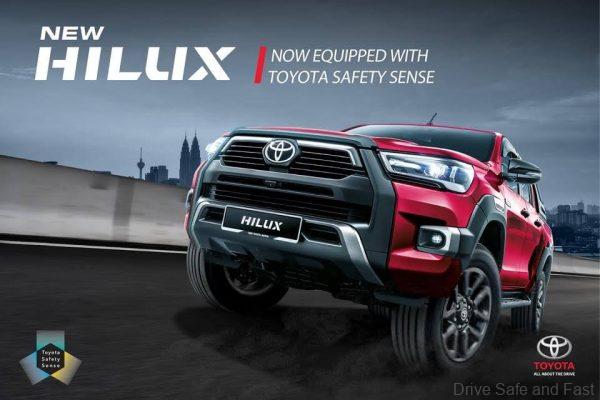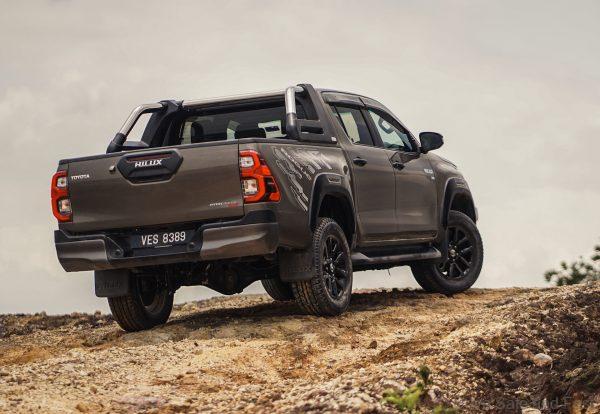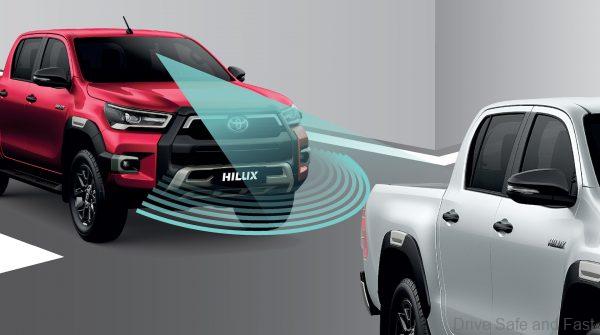Toyota Safety Sense In The Hilux Rogue Pickup Truck
Explained For Your Better Understanding
The Toyota Hilux is undoubtedly Malaysia’s best-selling pick-up truck. Its continued position as the market leader in its segment has been due to not only the advanced and tough appearance but more importantly, a globally proven record of reliability and durability for over 52 years (since its first production in 1968).
Meet the latest Toyota Hilux the ‘Rogue’. For 2020, Toyota engineers have initiated not only several new design improvements in the interior and on the exterior but added safety features that are included in Toyota passenger vehicles.
This is the first time that the world-class Toyota Safety Sense is integrated in Toyota pickup trucks in order to bring utmost confidence to both drivers and passengers in all journeys.

Priced from RM92,880 to RM146,880 for this 2.8L Rogue, you will need to visit a Toyota showroom to get a closer look and feel of this new premium truck and its passenger car safety features.
So what is ‘Toyota Safety Sense’?
Well, this is a system that contributes to the reduction of collision risks which results in both a possible lower road accidents and a safer driving experience. Toyota Safety Sense™ (TSS) was designed to help protect drivers, passengers and people in other vehicles on the road. TSS represents a major milestone in Toyota’s long history of creating advancements and innovations in safety that help prevent crashes and protect people.

So how does TSS work?
Under certain conditions, TSS is designed to support driver awareness, decision making and vehicle operation over a wide range of speeds. Packaged together in an integrated system, TSS features help address three key areas of accident protection: preventing or mitigating frontal collisions and keeping drivers within their lane. However, drivers are responsible for their own safety, and must always drive safely, obey traffic speed limits and laws and focus on the road while driving.
TSS consists of four active safety and driver assistance systems:
• Pre-Collision System (PCS) with Vehicle and Pedestrian Detection
• Dynamic Radar Cruise Control (DRCC)
• Lane Departure Alert (LDA)
PCS uses an integrated forward-facing camera and grille mounted radar system designed to help mitigate or avoid a potential collision with another vehicle or pedestrian. Vehicle Detection When PCS determines that the possibility of a frontal collision with another vehicle is high, it prompts the driver to take evasive action and brake by using an audio and visual alert. If the driver notices the hazard and brakes, PCS may use Yaw Assist to provide additional braking force. If the driver does not brake in a set time and the system determines that the possibility of a frontal collision with another vehicle is likely, the system may automatically apply the brakes, reducing speed to help mitigate the impact or avoid the collision entirely if possible.

DRCC is a high-tech cruise control system that uses a front grille-mounted radar and a forward-facing camera that is designed to detect a vehicle in front of you and automatically adjust the vehicle’s speed to help maintain a pre-set distance behind a vehicle ahead. Intended for highways and similar to “constant speed” cruise control, DRCC lets drivers maintain a set speed without constant throttle input from the driver. DRCC goes a step further, however, by including a vehicle-to-vehicle distance control system, which adjusts the vehicle speed to help maintain a pre-set distance from vehicles in front. This means that if the vehicle ahead is detected traveling at a slower speed than your pre-set range, DRCC will automatically slow the vehicle to maintain a pre-set following distance without deactivating cruise control. If DRCC determines the vehicle needs to slow down even more, an audio and visual alert occurs and brakes are applied. When there’s no longer a preceding vehicle driving slower than your set speed, DRCC will accelerate back to your set speed. Select TSS vehicles feature Full-Speed Range Dynamic Radar Cruise Control, which is designed to allow low-speed following, speed matching, stopping, and acceleration/deceleration to a preceding vehicle.

LDA is designed to use an in-vehicle camera to detect lane departure when traveling on relatively straight roads with clear lane markings. The system’s current operating status is indicated through colored lane marking illustrations on the vehicle’s Multi-Information Display (MID). If LDA determines that the vehicle is starting to unintentionally deviate from its visibly marked lane, the system alerts the driver with an audio and visual alert. When this alert occurs, drivers must carefully check the surrounding road before safely directing the vehicle back to the center of the lane. Lane Departure Alert (LDA) minimum operation speed is 50 km/h.

So, the above stated features might seem a little complicated to absorb completely right now, no matter, just be assured that Toyota has equipped their latest urban workhorse, the Rogue with the same safety features you find in a premium Toyota sedan costing some 30 percent more. Now that’s what you need to focus on. High Safety!
